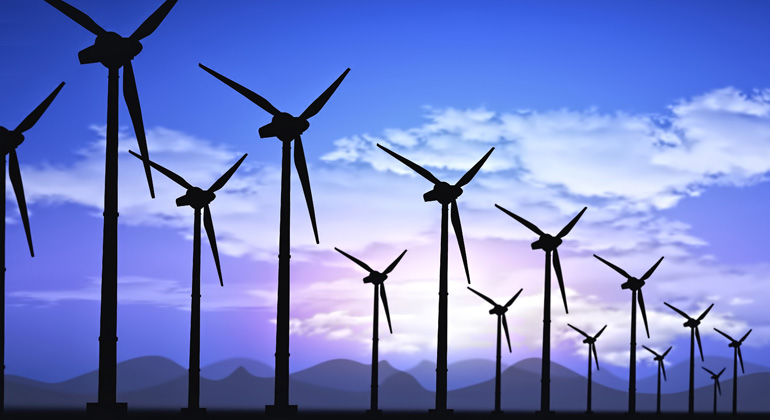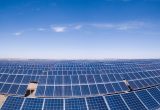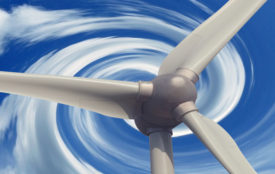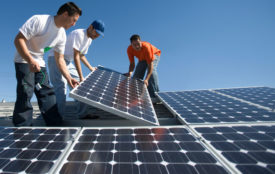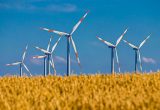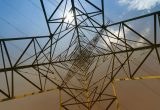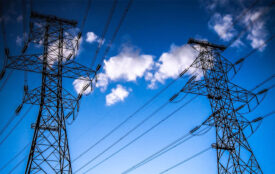Wind power: mitigated and imposed external costs and other indirect economic effects
Since the 1990s, (onshore) wind power has become an important technology for electricity generation throughout the world. The economic rationale is the mitigation of negative externalities of conventional technologies, in particular emissions from fossil fuel combustion.
However, wind power itself is not free of externalities. Wind turbines are alleged visual and noise impacts as well as threats to wildlife. Further indirect economic effects comprise costs for integrating variable wind electricity into the power system. Economic outcomes, such as employment and GDP, can be positively or negatively affected both locally and nationally. This Roundup summarizes evidence from multiple literatures on mitigated and imposed external costs and further indirect economic effects.
17 gigawatt (GW) of onshore wind turbines were installed word-wide in 2000. This number has risen to above 400 GW in 2015, with China, the US, and Germany as biggest markets (IRENA 2017). Likewise, the share of wind power among German gross electricity consumption grew from 1.5% in 2000 to 12% in 2015 (BMWi 2016). As the private economics outside support schemes may, still, be inferior to conventional alternatives, this development is driven by the public economics of wind power (Borenstein 2012).
Specifically, wind power helps to prevent external costs of conventional generation technologies. Ittargets mitigation of global climate change, health and environmental damage from regional emissions, external costs of mining, and nuclear risks. However, wind turbines must be constructed in large numbers to be effective. Such land use change raises awareness of intrusions into the environment (Pasqualetti 2000) and may thus foster opposition; likewise, it can threaten wildlife. Beyond direct external costs, the variability of wind power – its supply depends on weather conditions – may result in the need to costly adapt the power system.
Most stated-preference studies infer a positive willingness-to-pay for renewable electricity in general (Soon and Ahmad 2016), and wind electricity in particular (Ma et al 2015). Among the correlates climate considerations stand out (Sundt and Rehdanz 2015). Going beyond stated preferences, the following provides a deeper discussion of evidence on externalities and other indirect economic effects.
Imposed externalities: landscape
Visual dis-amenities are an important driver of opposition to wind turbine developments (Mattmann et al 2016, van Rensburg et al 2015). Quantitative valuation studies of wind turbine externalities consistently find a central role for landscape deterioration; be it hedonic-pricing (Gibbons 2015), life-satisfaction (Krekel and Zerrahn 2017), or stated-preference approaches (Mattmann et al 2016). Specifically, external costs materialize for residents in closer proximity to turbines (Jones and Eiser 2010 Meyerhoff et al 2010 Guo et al 2015); evidence on habituation over time is mixed (Ladenburg et al 2013 Wheeler 2016, Wilson and Dyke 2016).
Environmental psychology provides underlying rationales: preferences for natural landscapes (Kopmann and Rehdanz 2013) and traditional idiosyncrasies stand in opposition to industrial structures such as wind turbines (Bidwell 2013). Such disruption of place-bound identities, which generate belonging, can reduce life satisfaction and evoke rejection (Cass and Walker 2009, Devine-Wright and Howes 2010, Lewicka 2011).
Against this background, a participatory turbine siting process that pays attention to early political or economic involvement, transparent information, and potential discretion at the local level can mitigate negative external effects and foster acceptance (Cowell et al 2011, Friedl and Reichl 2016, Wolsink 2007). In this context, research has come to reject plain not-in-my-back-yard (NIMBY) explanations for opposition as too superficial (Wolsink 2012). Moreover, plain NIMYism is empirically not confirmed in most studies.
Imposed externalities: noise and health
Wind turbines emit some noise from rotating blades, which several stated-preference studies found to be associated with subjectively reported annoyance (Groth and Vogt 2014, Shepherd et al 2011) and lowered sleep quality (Onakpoya et al 2015). However, no study could identify a causal impact (Dai et al 2015, McCunney et al 2014, Schmidt and Klokker 2014). Situational salience and general opposition rather cause a nocebo effect (Feder et al 2015, Knopper and Ollson 2011), which is also underlined by evidence from lab experiments (Crichton and Petrie 2015, Van Renterghem et al 2013).
Imposed externalities: wildlife
Ecological research finds increased mortality from collisions for birds and bats (Carrete et al 2009, Hayes 2013, Lehnert et al 2014, Loss 2013, Voigt 2015) However, evidence on long-term population-level effects, also concerning habitat change, is largely missing (Schuster et al 2015, Wang et al 2015). At the same time, research identified good practices to keep impacts low. Siting is key: especially vulnerable areas, for instance for breeding and hunting, should be avoided; moreover, temporary shutdowns and mitigative turbine design can help (Dai et al 2015, May et al 2015, Schuster et al 2015).
Electricity system perspective: mitigation external costs
Electricity generated by wind turbines has zero marginal costs. It shifts out the short-run market supply curve to the right, and displaces other technologies and the according external costs, notably from greenhouse gas emissions. Which plants are displaced and the extent of mitigation depend on the supply structure of an electricity system (Figure 1).

© DIW Berlin
To give some notion, the German Environment Agency (Umweltbundesamt) assesses that one MWh (onshore) wind energy displaced somewhat below 0.8 tons CO2 equivalents in 2013 (UBA 2014) and some 0.7 tons in 2015 (BMWi 2016, UBA 2017). Studies for Ireland, with less emission-intensive natural gas plants, determine 0.28 tons (Wheatley 2013), and for Texas 0.43 to 0.63 tons (Cullen 2013, Kaffine et al 2013, Novan 2013).
Damage estimates from CO2 emissions are highly debated. Integrated Assessment Models conclude on a broad range of values – a meta-analysis suggests a mean of 41 US Dollar and a 95% percentile of 146 Dollar per ton of CO2 emissions (Tol 2009). However, when also accounting for (i) intrinsic values of biodiversity, political stability, violent conflict, and migration flows (Doyne Farmer et al 2015, Stern 2013, Stern 2014a); (ii) insights from behavioral economics (Chambers and Melkonyan 2017) such as loss aversion; (iii) rather normative inter-generational social discounting based on ethical principles (Goulder and Williams III, Stern 2014b); and (iv) structural uncertainty and catastrophic risks (Gollier and Weitzman 2010 Roe and Baker 2007 Weitzman 2009, 2014), then damage estimates are at the upper end (Bommier et al 2015 Burke et al 2015). Addressing all points, a conservative lower bound would be 125 US Dollar per ton of CO2 (van den Bergh and Botzen 2014).
With 0.7 tons mitigated CO2 equivalents, this amounts to prevented external costs of almost 90 US Dollar per MWh wind energy in Germany in 2015. Beyond greenhouse gas emissions, also other external costs of fossil and nuclear electricity production are mitigated, such as regional airborne emissions, external costs of mining or nuclear risks and waste. Total lifecycle assessments of non-climate external costs conclude on 8 – 14 Euro per MWh for coal and 3.5 – 5 Euro for natural gas (CASES 2008), opposed to below one Euro per MWh for wind onshore. For nuclear power, estimates for external costs range between 1 – 2 Euro per MWh (CASES 2008) and, attaching a higher weight to accident costs, for which no full private insurance exists, 32 (Rabl and Rabl 2013) and 340 Euro per MWh (Meyer 2012).
Electricity system perspective: economic effects of variable wind electricity
Electricity generated by wind turbines varies with wind conditions and cannot be scheduled as needed. Figure 2 shows hourly electricity demand and simulated residual electricity demand – that is demand minus supply of variable renewable energy, such as wind – for Germany for 2050 (Zerrahn and Schill 2015). Residual demand exhibits greater variability, steeper inter-hourly changes, and partly becomes negative (periods of excess supply).
As such, electricity cannot be (economically) stored, but supply and demand must be continuously balanced. Thus, the variability of wind electricity may, in the short term, require increased flexibility within the electricity system, which can incur additional cost (Agora Energiewende 2015a): (i) costs for balancing short-term fluctuations (Abrell and Kunz 2015), (ii) higher wear and tear as well as fuel costs due to increased requirements to ramp plants up or down (Schill et al 2017); (iii) opportunity costs from over-production of wind electricity that cannot be fed in; and (iv) on a spatial scale, potentially grid costs arising from the decentral locations of wind plants (Kunz 2012).

Sources: Own calculations for 2050 based on Zerrahn and Schill (2015)
Discussion Papers: “A Greenfield Model to Evaluate Long-Rund Power Storage Requirements for High Shares of Renewables”
